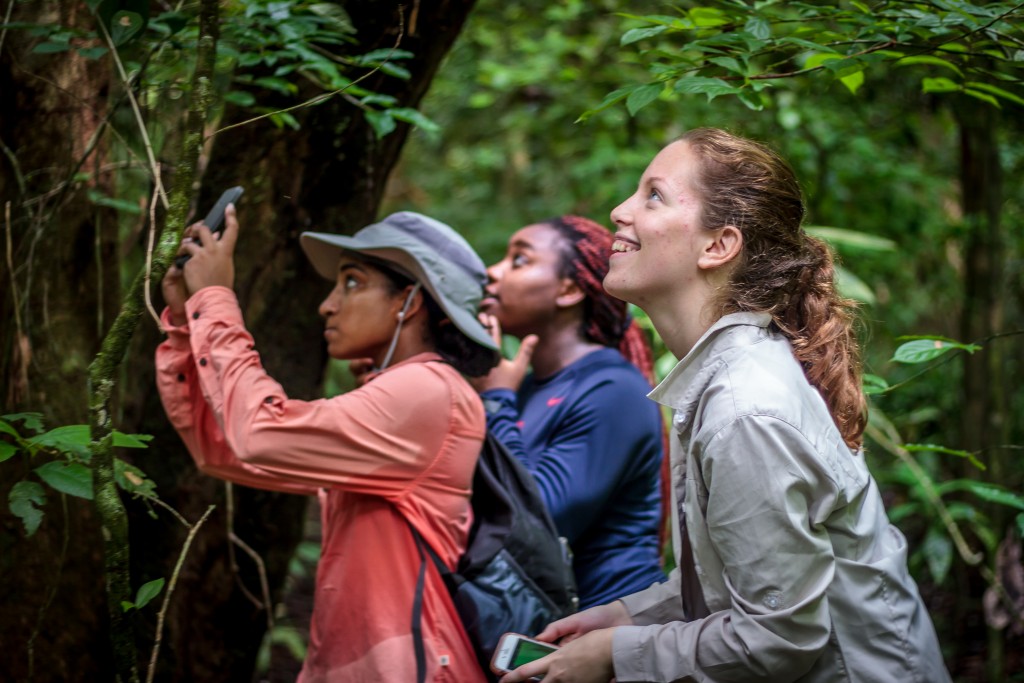Our
Story
So
Far
In the summer of 2015, Ph.D. student Peter Tellez and undergraduate Jennifer Janowsky from Tulane University, traveled to Panama to begin the sampling process for the Leaf Trait Project. Our goal was to sample leaves from over 30 tree species varying, measure leaf characteristics, and isolate the fungi that live inside the leaves, more commonly known as endophytes. But what are endophytes?
An endophyte is a symbiotic bacteria or fungus that spends its life within a plant without causing any symptoms of disease. They are ubiquitous and have been found in all plant species studied thus far. In the tropics, fungal endophytes are especially abundant within leaves, with a single leaf hosting 12 or more species of endophytes, a creating a community of endophytes with a quilt-like pattern inside of leaves (see below).

Although endophytes inhabit all plants in the tropics, not all plants host the same community of endophytes; some plant species have lower endophyte frequencies while neighboring plants have higher frequencies. Why is that? Researchers have previously looked at the role of the environment, the habitat characteristics of plants, and relatedness of plants, in trying to explain why we see certain patterns of endophyte abundance and diversity in plants. However, how particular leaf characteristics -- physical and chemical characteristics -- has not been studied yet. Our research project's goal is to fill that knowledge gap in plant-endophyte research.
Our research took place at two sites in Panama: the Barro Colorado Island Research Station in the Panama Canal, and our lab in of Gamboa. In Barro Colorado Island, Peter and Jennifer began the process of sampling of leaves from 30 different tree species, 3 individuals per species, and 10 leaves per individual. These tree species differed in leaf characteristics ranging from, short-lived leaves that are thin and high in nutrient content, to long-lived leaves that are thick and low and nutrient content. Leaves were labeled and taken back to our lab in Gamboa for further processing.
Once in Gamboa, we began the process of measuring the thickness, toughness, density, and mass per area for each leaf, ultimately creating a leaf trait profile for each tree species we sampled.
We extracted endophytes from leaves by cutting small, 2 x 2 mm leaf segments, sterilizing the leaf segments, and placing them in nutrient-rich media for the fungi to grow on. For each individual tree, 96 leaf segments, from the 10 leaves collected per tree, were placed in tubes with media. The remaining leaf segments were stored in tubes for future next-generation sequencing.
Our work took two months to complete, with some additional help of Kim Mighell and Liz Kimbrough. Our field work completed, our samples were shipped out to Tulane University for further processing.
Barro Colorado Island Research Station, part of the Smithsonian Tropical Research Institute
Once our samples arrived at Tulane, our team of motivated undergraduates began the labor intensive process of transferring the fungal cultures from tubes to Petri plates. From October 2015 until May of 2016, our lab transferred over 3000 fungal samples to new plates and shipped in batches to the Arnold lab at the University of Arizona, where the molecular work was to be done.
In the summer of 2016, our lab returned to Barro Colorado Island to measure environmental variables that may also be important in shaping endophyte communities structure in the tropics. Our group for this summer included Pellegrini, Courtney from Tulane University, Jasmin Pratt from the University of Arizona, and Keiana Ashli Cave of Lusher Charter High in New Orleans, Louisiana.
